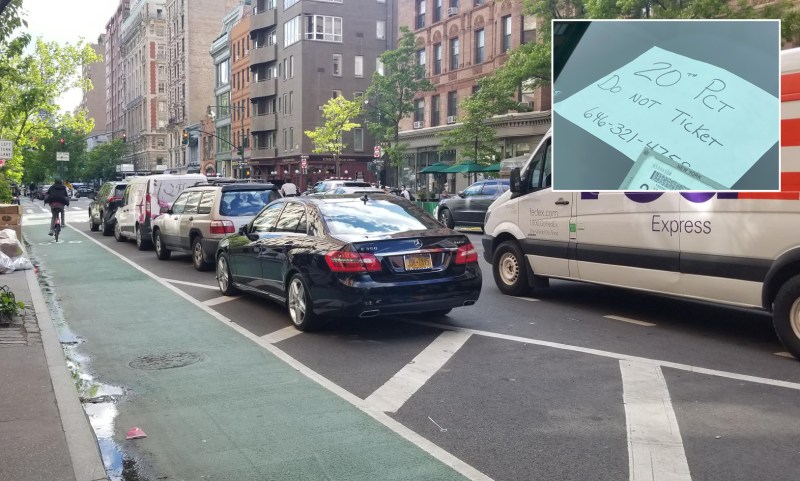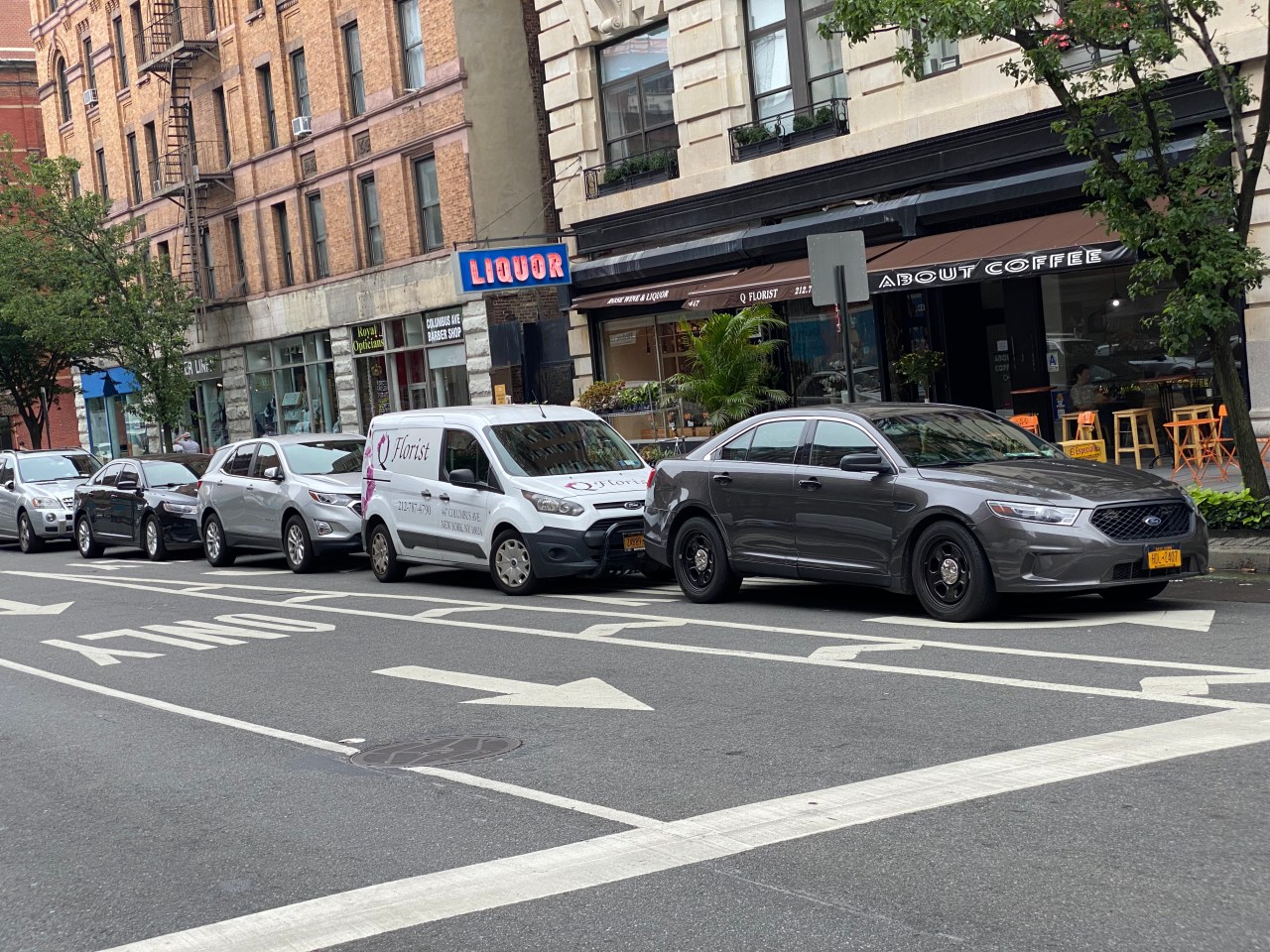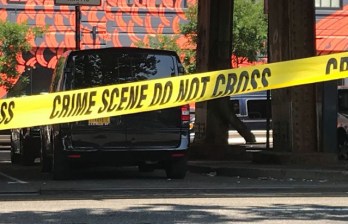Eyes on the Street: Cops are Undermining Safety on Columbus Ave.

To protect and swerve.
Cops in the 20th Precinct are leaving their private vehicles in a left-turn lane that was created by the Department of Transportation to make a busy Upper West Side intersection safer — the latest example of the DOT’s so-called “Vision Zero partners” not caring about Vision Zero designs.

It is no small thing that six or seven cars with city-issued placard — or sometimes an NYPD vest or hand-written note! — fill the left-turn lane just north of the intersection of Columbus Avenue and 81st Street. The bay was included in the Columbus Avenue redesign about a decade ago so that drivers waiting to turn at 81st Street — a key route to a Central Park transverse — would not back up other drivers. In addition, the turning bay creates more daylighting than a row of parked cars, which helps to keep pedestrians and cyclists safe.
But that’s all for naught now, thanks to officers who have taken it upon themselves to convert a turning lane into a parking lane. The scofflaws also often include a truck from a local florist (whose manager allegedly assaulted a Streetsblog source who questioned him about the illegal parking — and a police report was filed).
“I’ve watched drivers who want to turn left — without the turning lane, they don’t know what to do, which puts cyclists and pedestrians in danger,” said Lisa Orman of Streetopia UWS. “And it causes congestion, which increases the likelihood of impatient drivers. It’s just so frustrating because the turning lanes are something that the DOT strongly advocated for in the redesign.”
The illegal parking is unsafe for another reason; the guarantee of a parking space is encouraging reckless drivers of the NYPD to drive to their station house, knowing they will always find a space. On several days recently, Streetsblog ran the plates on the cars illegally parked in the turning lane. We found:
- One driver with 16 serious moving violations (two red-light tickets and 14 speeding tickets).
- One driver with nine serious movers (three red lights and six speeding tickets).
- One driver with seven serious movers (one RL/six speeding).
- One driver with five serious movers (one RL/four speeding).
- One driver with four speeding tickets.
- One driver with four serious moving violations (one RL and three speeding).
Such driving records for our men and women in blue is no surprise to readers of Streetsblog, whose investigation in 2019 revealed that police employees get serious moving violations at twice the rate of the general public — which is a serious concern given that half of the NYPD lives in the suburbs and more than half drive to work every day.
Streetsblog has also tirelessly documented how NYPD station houses are a chaotic, dangerous mess because of all the illegal parking that cops do. That chaos causes crashes: our investigation of station house blocks from the start of 2018 until the dawn of the pandemic in 2020 revealed that:
- Crashes are much more likely on a precinct block because of the way cops park. In a city of 77 precincts, 70 station houses had a higher number of crashes on the precinct block than on either of the side streets directly on either side of the station house. Only four precincts in the entire city — the 62nd in Bensonhurst, the 90th in Greenpoint, and the Fifth and 23rd in Manhattan — had fewer crashes on the block in front of the station house.
- The increase in crashes on a precinct block versus the neighboring blocks varies by precinct and borough:
- In Manhattan, the average precinct block had more than double the crashes (118 percent more) than the blocks on either side of the station house.
- In The Bronx, the average precinct block had 75 percent morecrashes than the blocks on either side of the station house.
- In Brooklyn, the average precinct block had more than triple the crashes (204 percent more) than the blocks on either side of the station house.
- In Queens, the average precinct block also had more than triple the crashes (232 percent more) than the blocks on either side of the station house.
- Staten Island had similar numbers, but the results were heavily skewed against the NYPD because one precinct block contains a busy supermarket with a large parking lot, and it is likely that the supermarket bears a disproportionate share of the blame for crashes.
We reached out to the NYPD and DOT and will update this story if either agency responds.


